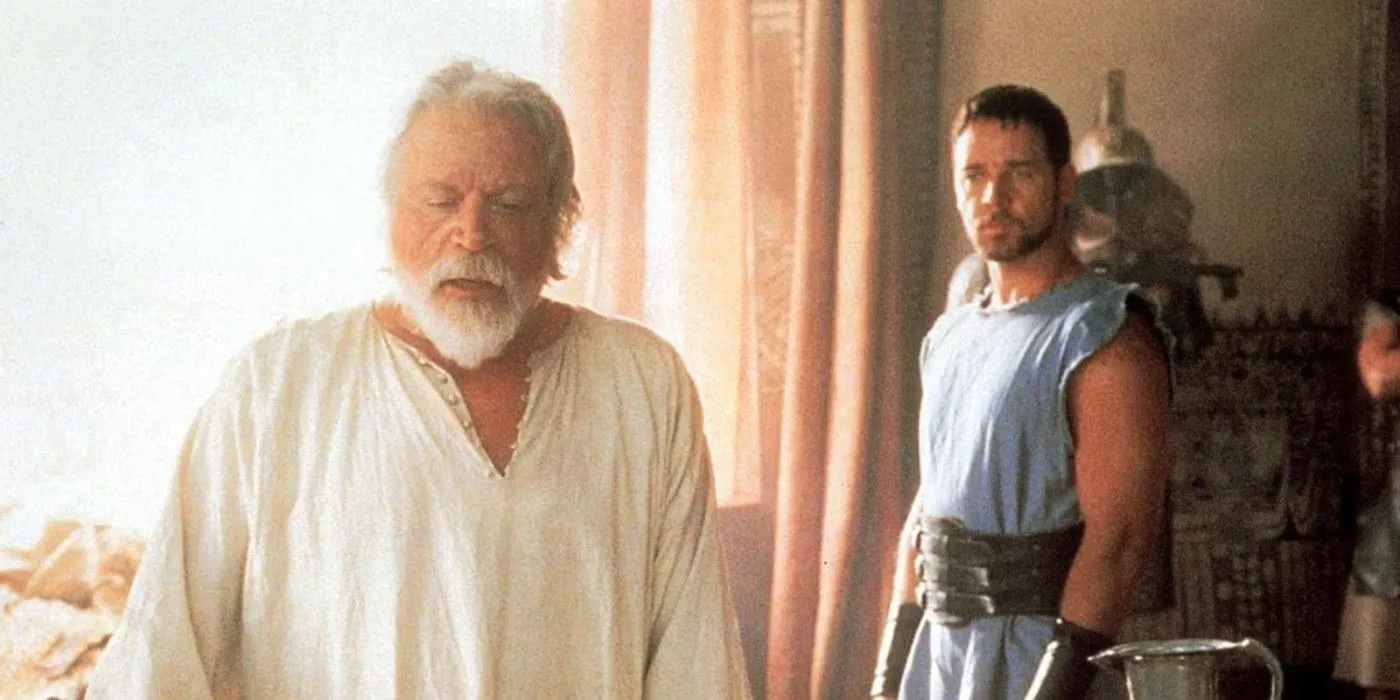
Centurion, released in 2010 and featuring Michael Fassbender, intertwines elements of historical fact with folklore, according to historian Tristan Hughes. The film, directed by Neil Marshall, portrays a harrowing journey of a small contingent of Roman soldiers in Northern Britain following a devastating ambush that decimates their legion. Fassbender takes on the role of Centurion Quintus Dias, supported by actors such as Olga Kurylenko, Dominic West, Andreas Wisniewski, and David Morrissey.
In a recent analysis on History Hit’s YouTube channel, historian Tristan Hughes shares his insights about the film, which he regards as a personal favorite. However, he points out notable inaccuracies, particularly regarding the infamous Ninth Roman Legion—a narrative element that lacks corroborative archaeological evidence.
The film uniquely incorporates genuine historical events, such as the Battle of Teutoburg Forest and the story of Boudica, a tribal leader known for her revolt against Roman rule. For deeper insights, check out Hughes’s commentary below or watch the full video:
“The setting of the film is intended to be Scotland, in present-day Northern Britain, although exact locations are ambiguous. The Ninth Legion is depicted as marching beyond Hadrian’s Wall in an effort to showcase Rome’s military strength in the north. I appreciate that the story combines three compelling tales from Roman history—elements of Boudica’s rebellion, the storied and controversial Ninth Legion, and the catastrophic battle in Germania’s forests around 9 AD.
“Although there’s no concrete evidence for the use of flaming projectiles depicted in the film, it’s feasible that they might have been employed with adequate preparation of the terrain. The battle sequences evoke the character of the Teutoburg Forest, where ambush tactics played a significant role. Interestingly, while the portrayal includes hefty weapons and throwing axes, spear representation is notably lacking, despite their fundamental importance for the attackers.
“The intensity of the battle scenes is striking and resonates with the brutal nature of such historical confrontations. The tale of the Ninth Legion is particularly intriguing; archaeological findings indicate it vanished from British records around 108 AD, with its last established presence linked to courses in York. This absence raises questions about the narrative that they were obliterated in Northern Britain. Instead, indications suggest that the Ninth Legion was reassigned or perhaps disbanded elsewhere in the Empire, evidenced by archaeological discoveries in Nijmegen and Petra.”
The Impact of Centurion’s Mixed Historical Accuracy on the Film
Centurion’s Reception: A Mixed Bag

Upon its release, *Centurion* garnered lukewarm reviews, achieving a mere 60% rating on Rotten Tomatoes. Audience reception was even less favorable, with a rating of just 43%. Critics pointed out that despite its gripping battle scenes and stunning visuals, the plot and character development fell short, lacking depth.
Financially, the movie was a disappointment, grossing only $6.9 million against its $12 million budget. The film’s historical elements were not the key focus in its critiques; instead, the absence of high-profile actors contributed significantly to its lackluster performance. Even Michael Fassbender, who would later gain acclaim in other roles, couldn’t create enough buzz to draw audiences in, a trend that became evident in films like *Assassin’s Creed* (2016), which also struggled despite its favorable source material.
Following *Centurion*, Fassbender took on another historical role in *Macbeth* (2015), which received better critical ratings (80% on Rotten Tomatoes), yet also fell short of box office expectations.
Analysis of Centurion’s Historical Accuracy
Do Historical Deviations Enhance the Narrative?

Films often adapt historical narratives for dramatic purposes. While changes can aid storytelling, unless a film claims to be an accurate representation of historical facts, such deviations can be acceptable. The primary objective of cinema is to entertain, rather than reproduce minute historical details with precision.
*Centurion*, as Hughes outlines, combines various historical fragments with fictional elements, resulting in numerous thrilling action sequences. Yet, the film’s historical variations don’t sufficiently enrich the character arcs or narrative depth—key aspects that elevate a film from being simply enjoyable to truly memorable.
Examining More Historically Accurate Films
Exploring Comparisons with Other Historical Epics





While *Centurion* captures some facets of the brutal realities of Roman Britain, it is not alone in its quest for historic authenticity. One prominent example is *Gladiator*, directed by Ridley Scott, which has received accolades for its adherence to historical details, especially regarding the loyalty of Roman legions and their conflicts with the Praetorians.
However, even *Gladiator* has its share of inaccuracies, and other films depicting this violent era can also vary in their commitment to historical fidelity. *The Last Kingdom: Seven Kings Must Die*, a conclusion to the earlier series, represents a different period but shares a similar inclination towards a graphic representation of warfare in ancient Britain, albeit with mixed reviews on historical accuracy.
Notable films such as 1995’s *Braveheart* and 2005’s *Kingdom of Heaven* showcase the liberty filmmakers often take with historical narratives, often embellishing or oversimplifying events to suit a gripping storyline. Thus, while *Centurion* may not rank as the most historically precise film, it certainly does not fall into the lowest tier of accuracy.
Source: History Hit




Leave a Reply